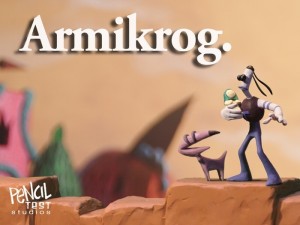Review for Caffeine: Episode One

I couldn't help but notice the irony in the fact that I had a full cup of coffee sitting next to me as I started episode one of Caffeine. Touted as first-person sci-fi horror, Caffeine presents a world that is hopelessly addicted to coffee, way beyond merely enjoying a cup whilst playing a video game. People of the future have become so addicted, in fact, that synthetic caffeine is a crucial commodity. Mining stations have been constructed in outer space to extract the substance, thus giving the population its collective fix. Caffeine is set on just such a station. Though inspired by first-person shooters like Doom 3 and F.E.A.R. 2, it feels more like an atmospheric exploration game akin to Dear Esther and Gone Home with a setting that looks like it could have been lifted from Alien: Isolation. The result is an experience that feels experimental, yet at the same time like it's already been done. Such games don't require much besides curiosity and rapt attention; their challenge is simply to hold both of these until the end. Unfortunately, despite its uniquely interesting premise, Caffeine hasn't managed to hold either for me so far.
In the first of three planned episodes, created by lone developer Dylan Browne and partially funded through Indiegogo, players step into this coffee-soaked world as a young boy who awakens aboard a mining station, where everything is a little higher than you can reach and everyone else seems to be missing. Your only clues as you traverse the station in search of signs of life come in the form of notes pasted at random to every possible surface. Good old-fashioned yellow sticky notes seem to have been the primary mode of communication for the station's former inhabitants despite any advanced technology they presumably had at their disposal. They are everywhere, but the idea actually kind of works. In a world where everyone is jittery with caffeine, why wouldn't the hastily written, absentminded sticky note be a favored way to communicate?
Besides zooming in to read each note you encounter, controls are minimal and fairly standard. You can move around freely using the keyboard while controlling the camera with the mouse, pick things up and interact with switches by clicking on them, and… that's about it. Caffeine's “puzzles" mostly consist of picking up key cards to open doors and simply navigating the meandering space station.
My biggest issue with this title is that it is still largely broken. Upon first loading it, I was struck by intense synth-heavy music, a windowed mode that stretched beyond my screen's resolution, and an appalling framerate. I did what any gamer naturally would and checked the options menu to adjust my settings, which turned out to be the greatest puzzle of the game. After fixing my resolution, I had to fiddle around with the myriad settings to finally lower the massive framerate drops I kept experiencing, restarting the game multiple times before finally getting it to a playable rate. Since my first impressions were of a jarring technical nature, I feel slightly robbed of the initial oomph that usually hits me when being enveloped by the distinct atmosphere of a new game. I couldn't immediately immerse myself in Caffeine's derelict space station because technical issues surrounded me instead.
Unfortunately, bugs continued to compound my disappointment throughout the game. The physics were too ragdoll, with books spinning and swinging around at unnatural speeds, and god forbid I accidentally dropped a key card while I was moving. It would be lost in the far regions of space, never to open a door again. The option to sprint doesn’t exist, so I was forced to move at a snail's speed down empty corridors, but the chairs littered throughout the station have figured out how to break the speed of light. A couple of doors have chairs stacked in front of them, prompting you to move them to access a new area. Upon setting them down, they would fly out of my grasp and even zip past me as I continued down the hallway, which added to the scariness, just not in the way I was hoping. The environment isn’t meant to be zero gravity, but issues like these with the mechanics cause items to behave in unexpected ways.
The game glitched out completely at one point, when I found myself stuck on literally nothing in the station's kitchen. Standing in the middle of the floor, I could look around but couldn't move. After fruitlessly trying for several minutes to break free of my paralysis, I finally gave up and decided to exit and re-load the game. Here I was faced with the game’s nonexistent save feature. I had assumed I would be able to load my progress from an autosave, but no. Each time I had to quit the game and go back to it later for whatever reason, no matter how far I had gone or how many rooms I had discovered, I was forced to start all over again. The first episode is short and can be completed in only a couple of hours, so this may not be an issue for everyone, but some sort of checkpoint would be welcome. A save mechanic is so commonplace that it’s expected in any game in which the player must affect the environment in order to progress.
When things actually work as they should, the atmosphere is initially thrilling and feels appropriately dark, isolated, and foreboding. You start out in a small living area, with metal surfaces and modest amenities. A computer sits on a desk in the corner and an alarm is blaring, signaling something has gone wrong and setting the stage for the station's mystery. I was excited to begin exploring, but the environment quickly becomes redundant. Corridor after corridor looks almost identical, and with very little variation I found myself feeling bored. Even the sticky notes scrawled with messages get tedious after a while. I would have been more intrigued if a number of different documents such as journals and research reports were available to discover along with the stickies. Instead, I began to feel barraged with them. While I enjoyed the concept at first, more overall variation would have been nice.
Unfortunately, the sticky notes are your biggest hope of piecing together something resembling a story. Aside from an audio log, you learn almost everything about the station and its former inhabitants from these small yellow pieces of paper. Caffeine is described as horror, but I would use that term loosely. The atmosphere does convey a sense of dread, but nothing to speak of really happens, and very few actual scares exist within the setting or story. Many of the attempts to frighten are too clichéd or simply fall flat, such as the word "help" written on sticky notes over and over again.
One thing I can speak highly of in Caffeine is the fidelity of its graphics. If the developer had spent more time fleshing out different areas of the space station, the world would have been a stunning one. The graphics are exactly what one would expect from the Unreal Engine 4, which can render settings so realistic they're easy to get lost in. Details such as the cold metallic gleam of metal surfaces, fluorescent light reflecting on rippling pools of water that flooded the station, and the beautiful expanse of space as a backdrop through the windows succeeded in catching my eye and imagination where the game’s mechanics failed. Sadly, the engine's capabilities are lost on a setting that's so uniform throughout that at times I couldn't tell if I had already visited an area or not. Light switches help mark your way, but in a game that's focused so intently on exploration, the space station itself just doesn't hold enough interest.
The ambient sounds are impressive as well. Caffeine has little in-game music, but opening a door or entering a new area often comes with echoing, vaguely mechanical but possibly supernatural sounds. I was constantly waiting for some unwelcome creature or person to greet me at the end of a corridor or on the other side of a door. The game is very successful in making you feel completely alone. Isolation becomes almost tangible. There is almost no dialogue, so the scarce moments when you do hear someone speak are both jarring and hopeful. The station is mostly dark. The light switches often reveal key sticky notes, but they don't always work. For these instances, you have a backup flashlight with a limited field of view, the only piece of equipment in the entire game. Sound and lighting were without question the most effective vehicles for suspense for me.
It’s difficult not to compare Caffeine with similar exploration games, but where others have succeeded in spades, giving us gorgeous vistas or nostalgia-filled environments to explore, Caffeine fails to measure up. Gameplay was sparse in both Dear Esther and Gone Home, but they brought us into their worlds and made us want to stay in them through their use of narrative and constantly evolving, organic atmosphere. I didn't want to remain in Caffeine's world. The prospect of exploring a rundown, industrial space station seemed promising at first, and one of the earliest notes declaring "coffee is the key" shot excitement through my caffeine-addled mind, but my experience with the game was almost immediately marred by major technical problems and lack of compelling style or substance. Its developer has promised fixes, so it remains to be seen whether the overall game is improved in upcoming episodes, but for now, even without its flawed mechanics, Caffeine doesn't feel like much of anything. It's as bland and unsatisfying as watered-down coffee in a leaky Styrofoam cup.





























